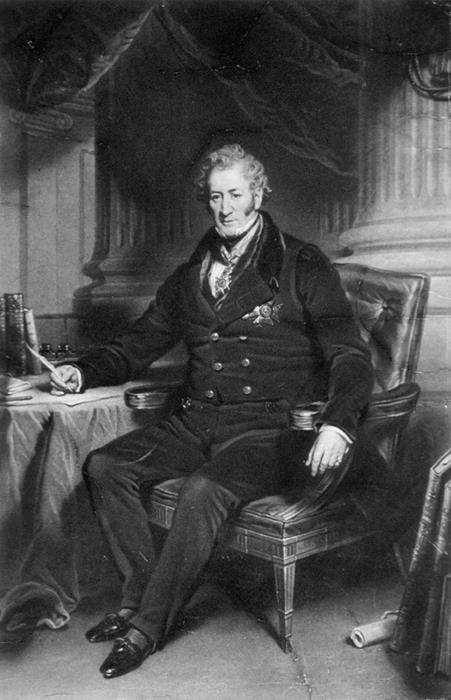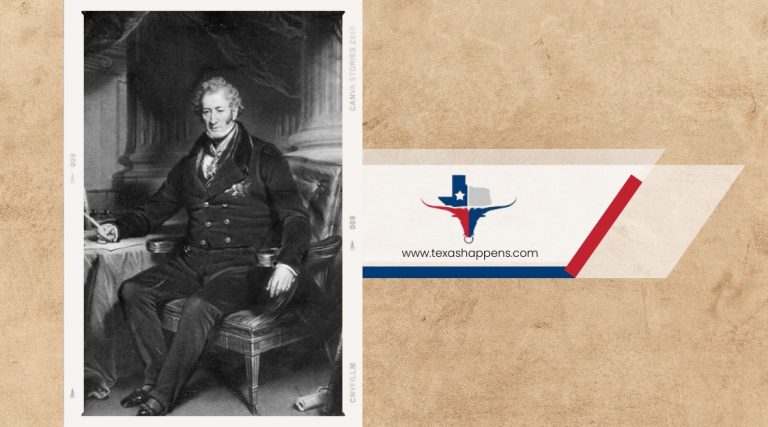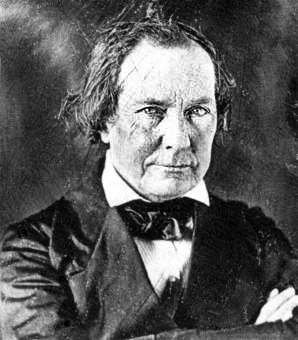David G. Burnet held several key roles in the history of Texas. Born on April 14, 1788, in Newark, New Jersey, Burnet was one of many children in a large family. His early life was marked by the loss of his parents, after which he was raised by an older brother. In 1806, he took part in Francisco de Miranda’s expedition to liberate Venezuela from Spanish rule, albeit unsuccessfully. He then attempted to establish a trading post in Natchitoches, Louisiana, which also failed. Burnet later moved to Texas, where he faced multiple challenges but stayed committed to the region.
Early Life

David Gouverneur Burnet was born on April 14, 1788, in Newark, New Jersey, to Dr. William Burnet and Gertrude Gouverneur Rutgers, a family with strong colonial ties. His father was a prominent physician and a member of the Continental Congress.
Burnet received a solid education and studied law, although he chose not to pursue a legal career. Instead, he worked as a clerk in Cincinnati, Ohio, and attempted to establish a colony in what is now Colorado in 1817, which ultimately failed due to harsh conditions and lack of support.
In 1826, Burnet migrated to Texas, then part of Mexico, seeking new opportunities. He initially settled in Stephen F. Austin’s colony, where he became involved in local affairs, purchasing land and interacting with influential settlers, which set the stage for his future political involvement.
Role in the Texas Revolution
David G. Burnet’s early political involvement in Texas began with his support for Texian settlers’ rights under Mexican rule. He was vocal in his opposition to the centralist policies of the Mexican government, which increasingly restricted the autonomy of Texan settlers. Burnet’s leadership emerged prominently when he attended the Convention of 1833, which petitioned the Mexican government for separate statehood for Texas.
As tensions escalated, Burnet participated in the Consultation of 1835, which established a provisional government for Texas. His steadfast support for independence grew stronger, and he played a significant role in rallying support for the cause.
On March 17, 1836, during the Convention of 1836 at Washington-on-the-Brazos, Burnet was appointed interim President of the newly declared Republic of Texas. His presidency was marked by crucial decisions during the Texas Revolution, including the signing of the Treaties of Velasco in May 1836, which ended hostilities and secured Texas’ independence from Mexico. Burnet’s leadership during this tumultuous period was instrumental in the foundation of the Republic of Texas.
Presidency (1836)
David G. Burnet’s presidency in 1836 was fraught with significant challenges, including the ongoing Texas Revolution and the dire need for effective governance in the fledgling Republic of Texas. One of the major challenges he faced was managing the aftermath of the Battle of the Alamo and the subsequent Runaway Scrape, where Texan settlers fled their homes to escape advancing Mexican forces.
His administration signed the Treaties of Velasco with General Santa Anna in May 1836, which formally ended hostilities and recognized Texan independence, although the Mexican government later repudiated the treaties.
He often clashed with Sam Houston, the commander of the Texan Army, over military strategies and governance. Burnet criticized Houston’s retreat strategy but ultimately supported him after the decisive Battle of San Jacinto, which secured Texas’ independence. Burnet also worked with Stephen F. Austin, who served as Secretary of State, despite differing views on several issues.
Post-Presidency Activities
After his presidency, David G. Burnet returned to private life but remained actively involved in Texas politics. He resumed his law practice and managed his plantation, yet his commitment to the Republic of Texas persisted. In 1838, Burnet ran unsuccessfully for the presidency against Mirabeau B. Lamar, demonstrating his continued interest in leading the fledgling nation.
Burnet’s political career saw a resurgence when he was elected Vice President of the Republic of Texas in 1839, serving under President Mirabeau B. Lamar. In this role, he supported Lamar’s policies, which included efforts to strengthen the republic’s independence and expand its territory. Burnet also participated in diplomatic missions and represented Texas in negotiations with foreign entities.
Conclusion
Despite political challenges and personal disputes, Burnet remained a prominent figure in Texas’ development. His contributions during and after his presidency helped shaping the early years of the Republic of Texas, solidifying his legacy as a key statesman in Texan history.




